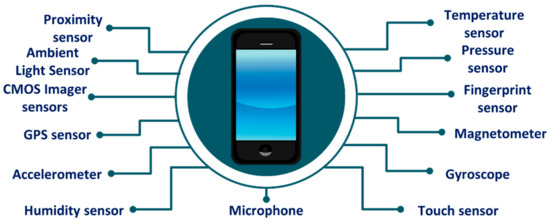
“Passive” therapists in your pockets: @GEOTECUJI meets mental health
If you are a smartphone user, you can be sure that your life is being recorded. Who do we call? Where we are? How many times do we check the mail? How often do we consult news websites? Who are our contacts? How long do we walk per day? When do we arrive and leave work? The answers to these and other questions are no mystery to the smart devices we carry with us every day. It is as if each one writes down in a personal diary each of the daily tasks, with whom he has spoken today, where he has been, or what time he has gone to the gym or the supermarket. Now, mobile devices can automatically write in a digital manner that personal diary because they are capable of stealthily observing and “listening” to our movements and actions without being aware of.
The term passive sensing refers to the ability of mobile devices to capture data through the sensors they incorporate without user intervention. The greater the variety of sensors in a mobile device, the more details can be recorded in that personal digital diary. Because sensors are like the senses for people: they capture information from the outside world. A standard smartphone incorporates a good number of sensors (see figure below), such as the accelerometer, gyroscope or GPS, which allow to observe the speed, direction, and position of the device (and the person) at all times. This video explains the types of sensors that we normally find in modern smartphones.

Beyond the number and variety of sensors, smartphones are excellent tools for passively collecting data. In some parts of the world, smartphones are more ubiquitous than basic infrastructure like running water! They are everywhere, but especially in urban areas. Their ubiquity and ability to passively capture data makes them especially attractive for mental health research. That’s why mental health professionals have found an ally for therapies in smartphones.
Because the lack of professionals to treat the growing incidence of pathologies related to mental health is evident and the pandemic has done nothing more than highlight this lack of professional support. The research community has pinned its hopes on these mobile devices as passive pocket therapists that accompany the patient anytime, anywhere. The mental health research community has been exploring for some time the idea of ecological momentary assessments using mobile devices, which allow the capture of patient data (their mobility, behaviour with the device, etc.) in an uninterrupted way. The traditional protocol of a weekly patient visit to the therapist has given rise to a continuous capture of objective data.
However, the “more data, better therapy” rule is not as simple as it seems. Data alone does not help the patient or the therapist. The data needs tools that facilitate the analysis of the raw data collected for the adequate contextualization of the patient’s behaviour in their day-to-day life and interpretation of the patient’s response to the therapy proposed by the professionals.
Mobile technologies and devices applied to mental health have proven to be a fantastic complement to traditional therapies, but never a substitute. The therapist still needs analysis tools to correctly decipher the digital diaries written by mobile devices. And that is where GEOTEC group has been working lately, as we will see in the next post.
- Posted by geoadmin
- On 25 April, 2022
- 0 Comments




0 Comments